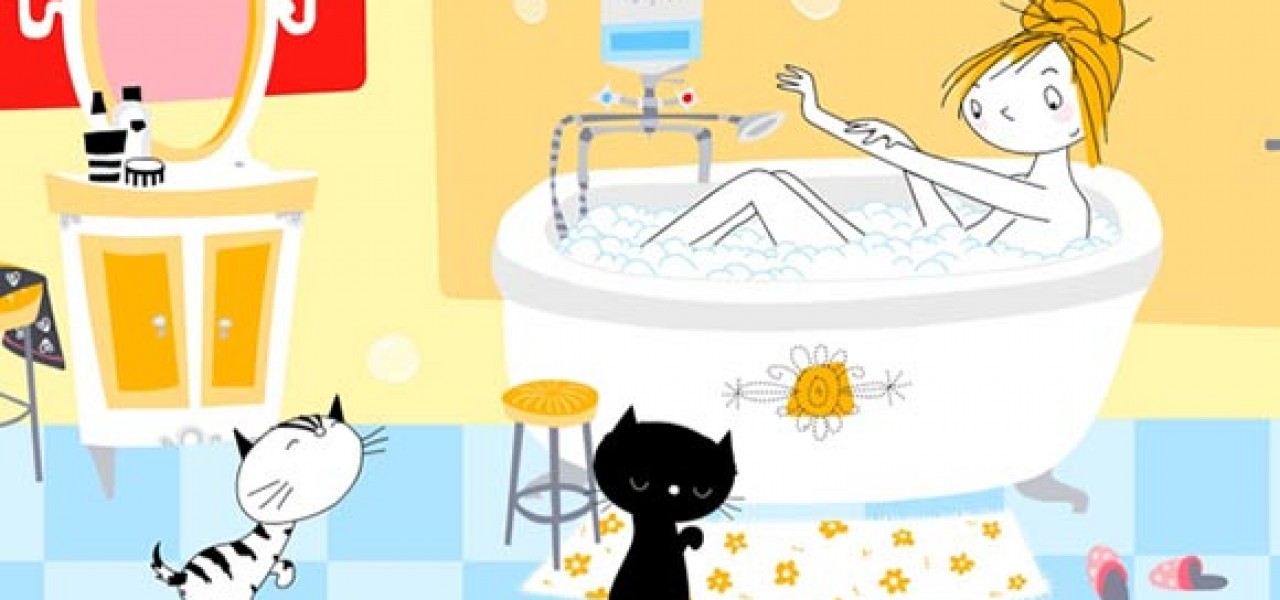
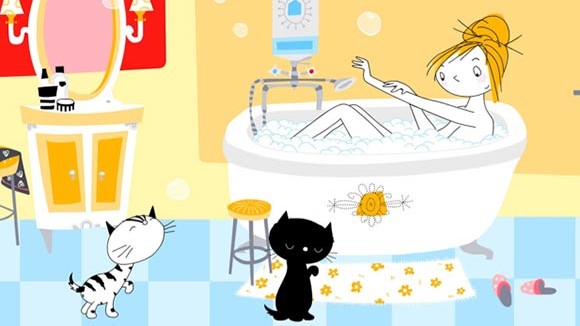
How to Translate a Beloved Dutch Illustrator’s Work Into a $1.25 Million Feature
For sixty years, Dutch illustrator Fiep Westendorp (1916-2004) dedicated her life to her art. She illustrated countless children’s books, newspaper comics, and magazine covers, creating memorable characters who were beloved by children and adults alike. It wouldn’t be an understatement to say that every single person in the Netherlands is familiar with Fiep’s work, even today, ten years after her passing.
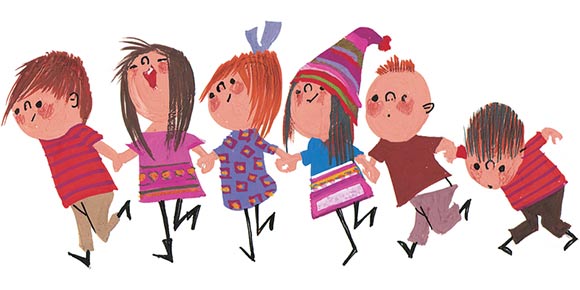
Westendorp’s work lives on—perhaps more than ever—through the Fiep Westendorp Foundation. Gioia Smid, conservator of Fiep’s work, took it upon herself to expand Fiep’s universe, first to the small screen with the 52-episode television series The Adventures of Pim and Pom in 2008, and now the big screen with Pim and Pom: The Big Adventure. The children’s film is part of a wave of animated feature films in the Netherlands. It was released in Dutch theaters last spring, where it earned over half-a-million US dollars. The film continues to screen at film festivals around the world and was recently released onto DVD.
In the seventy-minute movie, written by Fiona van Heemstra and Tingue Dongelmans, two girls plan to kidnap the cats Pim and Pom from their owner. They escape, but are completely lost. Roaming the street, the feline best-friends meet a gang of alley cats. Pim falls under the spell of the gangleader, but Pom doesn’t want to obey the rules of the gang, so she leaves. But then Pom finds out that their worried owner is searching for them. Their longtime friendship is put to the test when they are faced with trying to find their way home. Can everybody be happily re-united?
Last August Cartoon Brew sat down for an interview with the film’s director Gioia Smid, who also directs the Fiep Westendorp Foundation, and Hans Walther, assistant director/advisor on the movie.
Cartoon Brew: Could you explain what Fiep means to Dutchies?
Gioia Smid: Fiep has a special place in our hearts. We know her as a part of our youth; she is in our collective subconscious. That’s because, long ago, Fiep created an incredible amount of work for papers and children’s books that have been charming countless generations since. Somehow, her work still feels lively and contemporary to people. But at the same time there’s a strong sense of nostalgia—the corded telephones and antique cars have never changed and never will. The world Fiep created is a lovely and uncomplicated one. It’s a world where everyone is happy.
Hans Walther: The special thing about Fiep is that she illustrated many stories with different designs, but somehow kids look at them all as being part of one and the same world.
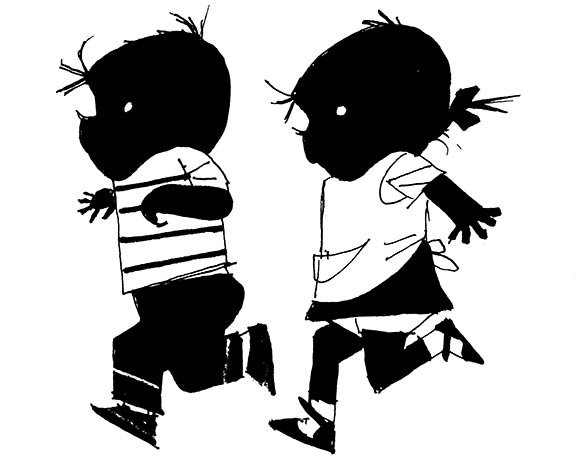
Cartoon Brew: Some of Fiep’s other characters are more famous than Pim and Pom. What’s the reason to make these two cats the stars of a feature-length animated film?
Gioia Smid: Of course I’ve thought about working with other Fiep characters, like Jip and Janneke [pictured above]. The thing is, they are silhouettes. They don’t have a back, no front, no eyes to look at you. Pim and Pom do. They can look you straight in the eye from the front and they have a bum from the back.
Hans Walther: Many of Fiep’s characters have been used in children’s films already, but they were always live-action. With Pim and Pom the choice for animation was obvious. Thanks to over one thousand preserved drawings of the cats and their habitat, we knew what they look and move like from every angle.
Gioia Smid: Also, Pim and Pom were long-forgotten since the Sixties. They were faded memories. I just happened to stumble upon them while archiving Fiep’s oeuvre. Big plastic bags filled with original Pim and Pom drawings were squeezed in her bathroom cabinets. So we had a great basis to work with and at the same time enough freedom to breathe new life into the characters, a freedom we wouldn’t have with Fiep’s most famous characters.
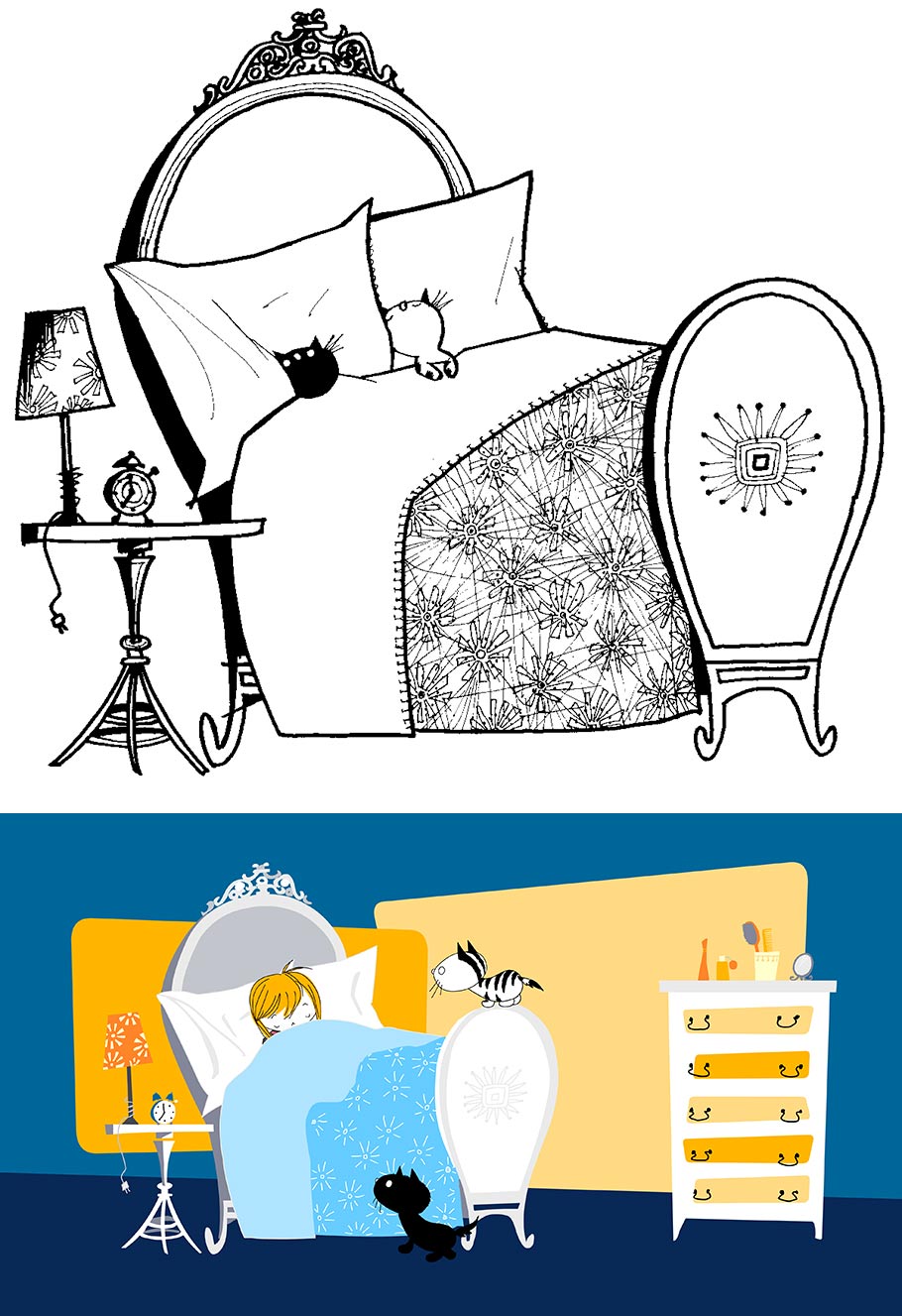
Cartoon Brew: How did you translate Fiep’s world into animation?
Gioia Smid: I asked several animators to show their view on animating Fiep, but most of those tests I didn’t like. They were too “beautiful.” Then there was one animator who just got it immediately. That was Marieke van Middelkoop, lead animator and art director of the TV series as well as the movie. While making the series several years ago she experimented a lot. You can actually see the quality progress throughout the series. For the film she created a style guide, “How to Pim and Pom,” that featured the basis of animating Fiep-style.
Hans Walther: There definitely is a big difference between Fiep’s illustrations and an animated film. Fiep’s work is flat. She stacked whole houses on top of each other. If you want to preserve that in an animated film, that is troublesome. Moving up and down and from left to right is all you can do. On the other hand, Fiep made it fairly easy for the animators to draw key poses. In her original works the characters’ poses are so strong and readable already. It was almost as simple as tracing Fiep’s drawings.
Gioia Smid: We have a digital database existing out of over 8,000 original Fiep drawings with tags added to all of them. So if you need a couch, a church tower or an umbrella, you can simply look it up in the database. Often the designers would literally cut and paste props to make them into backgrounds for the film. It was of great importance to us to stay true to the way Fiep looked at the world.
Hans Walther: What’s unique about this database is that Fiep essentially was able to draw a full feature-length film by herself, ten years after her death. I don’t think many people can say that.
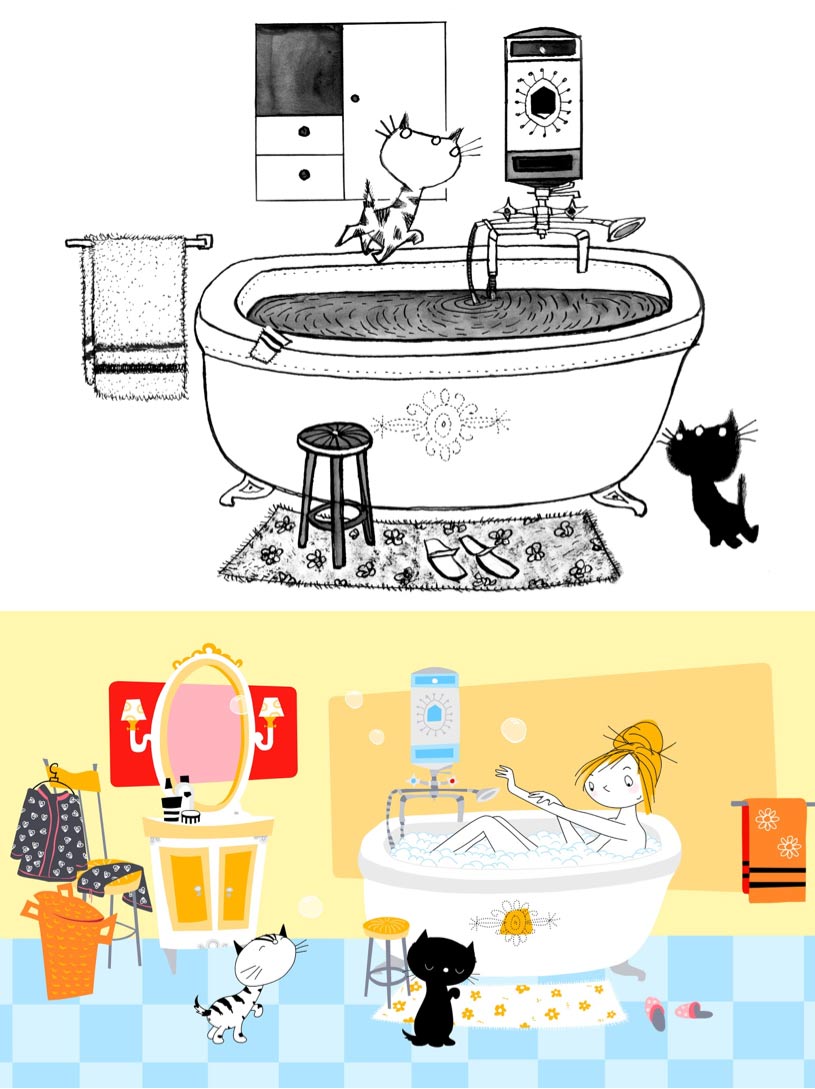
Cartoon Brew: Producing an animated feature in one single European country, especially one as small as the Netherlands, is tough. Why was this so important to you?
Gioia Smid: At the time I was preparing for the movie, there was this big discussion on Dutch animation talent. Dutch producers that were making animated movies said they were forced to transfer their animation work to Estonia, Latvia or Lithuania; low-wage countries with capable draftsmen who were able to work in a team under supervision. I felt it was a real shame to ship off all that animation and didn’t think we lacked animation talent. Plus, how could I ever explain Fiep in Latvian, you know? I think us Dutchies have Fiep in our genes. We already have a feeling connected to Fiep’s work. Imagine how a studio like Disney would animate this movie, well, I’d have to spend a year or so to explain to them all the things they can’t do. Our team of fifteen Dutch [Flash] animators just got it. Working with them felt like one big party.
Hans Walther: The quest for animators wasn’t easy, though. Marieke van Middelkoop returned for the movie, but the rest of the team needed to be built from the ground up. What Marieke found during the making of the TV series is that you shouldn’t animate Fiep in Disney’s style. Fiep’s characters just don’t move smoothly. Fiep was all about creating the maximum effect from minimum elements. That might sound simple, but it isn’t. Several animators, really great ones, returned the test animation to us saying, ‘I’m stuck. I just can’t do it.’
Gioia Smid: We thought: It’s minimal, so it should be relatively easy. But minimal is not easy at all.
Cartoon Brew: Did the low budget—€1 million—influence your creative choices much?
Gioia Smid: I’m not sure, actually. We offered ourselves quite a bit of flexibility. If I thought something in the script didn’t feel right, we’d revise it. We never thought ‘We’ll solve that in the animation phase’—they warn you for that in every single animation production manual.
Hans Walther: Gioia was the film’s director and the producer at the same time, so there was nobody who said ‘Gioia, move on already!’
Gioia Smid: Which was nice on the one hand, but on the other…you shouldn’t be both at the same time. But with this production it turned out fine.
Hans Walther: It turned out fine because Gioia knows when something is or isn’t essential. For example, she understood it was important to put aside enough budget for the development phase. We spent about two-and-a-half years on the story alone. We did sixteen versions of the script and redrew the storyboard five times from scratch. All of a sudden you understand why Pixar writers work on their stories for four or more years.
Back to the question—we roughly based the movie budget on that of the TV series, multiplying it by three. Since the freelance animators differed in their pace of working, they weren’t paid by day or month, but per shot. We knew how big our animation budget was, so we broke that into parts that were based on the amount of frames and the degree of difficulty (1 to 5 stars). This made the budget insightful for us as well as for the animators.
Gioia Smid: No one was badly paid, by the way. But the Dutch celebrities who did the voices definitely gave us a special rate. If they didn’t adore Fiep’s work as much as they do, the movie would have been much more expensive for sure. But in terms of looks or animation we didn’t make any concessions. In every phase we aimed for that sense of timelessness that Fiep mastered and I think this mission was accomplished.
Hans Walther: This is one of the few times I think, ‘Yes, this film has become what it should have been.
A behind-the-scenes look at the production of the film, in Dutch.
Cartoon Brew: Finally, will Americans get to see the film in cinemas?
Gioia Smid: I’m curious for that answer too… American animation, or actually everything targeted at kids, is soft and cuddly. Fiep is graphic. Pim and Pom do very well internationally, especially in Japan, but we have yet to find a US distributor for the film.
Hans Walther: Fiep is very much grounded in Dutch culture. So it’s difficult to predict how Americans will react to it.
Gioia Smid: But who knows? Rather than a simple subtitling version, we had the film dubbed by American actors and the songs performed by American artists, to make the film more accessible for the US.
All images in this piece: ©Fiep Amsterdam bv, Fiep Westendorp Illustrations.

.png)